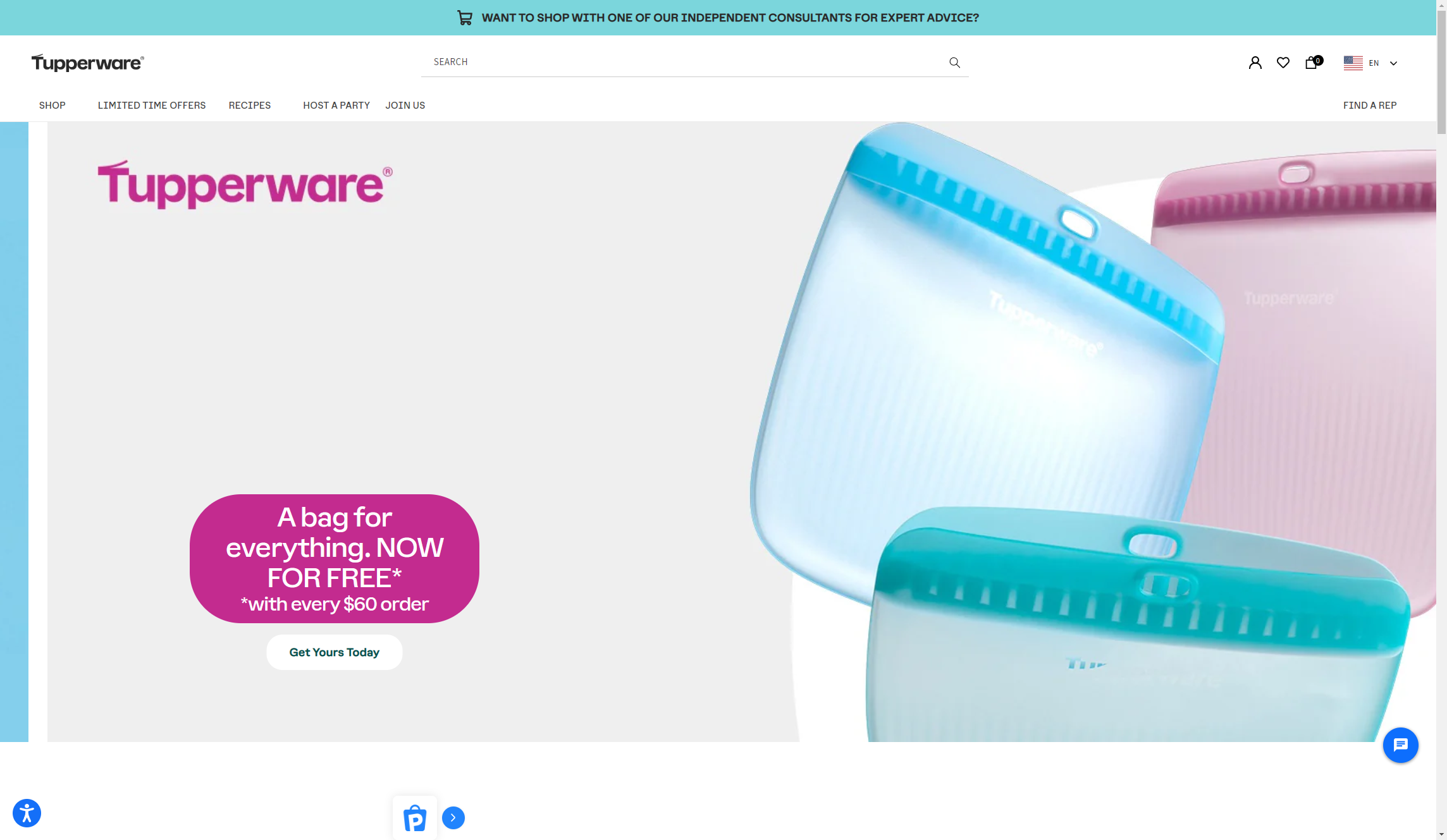- USD($)
- IRR(﷼)
- ANG(ƒ)
- LKR(₨)
- EGP(EGP)
- BZD(BZ$)
- CRC(¢)
- MAD(DH.)
- OMR(RO.)
- KES(KSh)
- GHS(₵)
- UGX(USh)
- RSD(Din.)
- RON(L)
- PGK(K)
- CDF(CDF)
- UYU($U)
- KZT(〒)
- PKR(Rs)
- MNT(₮)
- ARS(ARS$)
- COP(COP)
- MVR(Rf)
- IQD(د.ع)
- BDT(Tk)
- ZMW(ZK)
- NAD(N$)
- JMD(J$)
- AOA(Kz)
- MMK(K.)
- PEN(S/.)
- MOP(MOP$)
- BND(B$)
- LAK(₭)
- VND(₫)
- NGN(₦)
- KHR(៛)
- TWD(NT$)
- CNY(¥)
- SAR(S.R.)
- BHD(BD.)
- QAR(QR.)
- KWD(K.D.)
- UAH(₴)
- IDR(Rp)
- MYR(RM)
- AED(AED)
- JPY(円)
- INR(Rs)
- TRY(TRY)
- CLP(CLP)
- KRW(₩)
- ZAR(R)
- SEK(Kr)
- ILS(₪)
- HKD(HK$)
- THB(฿)
- PLN(zł)
- NZD(NZ$)
- NOK(Kr)
- MXN(MXN$)
- HUF(Ft)
- CZK(Kč)
- SGD(S$)
- PHP(₱)
- DKK(Dkr)
- CHF(SFr)
- BRL(R$)
- RUB(руб.)
- CAD(CA$)
- AUD(AU$)
- GBP(£)
- EUR(€)
Avoiding Fraud
How to Avoid Fake Pages
1. Check the Website URL
One of the easiest ways to identify a fake page is by examining the URL: Official Tupperware website: Our official domain is tupperware-us.com. Be cautious of any website with a different domain or subdomain that tries to mimic our brand (e.g., tupperware-usa.com, tupperwaredeals.net). HTTPS vs. HTTP: Always look for “https://” at the beginning of the URL. This indicates that the site is secure. Most legitimate e-commerce websites, including Tupperware, use HTTPS encryption. A lack of HTTPS may be a red flag for a fraudulent site. Suspicious Domain Names: Be cautious of websites with strange, misspelled, or overly long domain names. For example, a website like “tupperware-official-discount.biz” is likely a fake.
2. Look for the Lock Icon
The small padlock icon next to the URL is a sign that the website uses SSL (Secure Sockets Layer) encryption, meaning that your data is being transmitted securely. All official Tupperware pages use SSL encryption to protect your personal information. If you don’t see the lock icon, do not enter any sensitive information like payment details.
3. Verify the Website’s Contact Information
Legitimate e-commerce websites will always provide clear contact information, including customer service phone numbers, physical addresses, and email addresses. If the website you’re visiting lacks this information or provides only a generic email address like “[email protected],” proceed with caution.
4. Analyze the Website’s Design and Functionality
While many counterfeiters try to replicate the look of our official Tupperware website, there are usually small but noticeable differences:
5. Check for the Return and Warranty Policies
Tupperware products come with warranties that guarantee product quality and customer satisfaction. Any legitimate website will clearly state these policies. If the website you’re on lacks detailed return or warranty information, this is a major red flag. Fake websites typically offer no customer support or after-sales service.
6. Be Wary of Fake Social Media Pages and Ads
Fraudsters often create fake social media profiles or advertisements that mimic our brand to trick customers. These accounts might run “giveaway” promotions or direct customers to counterfeit websites. To avoid falling victim to these schemes:
Fraudulent Websites

Tupperware is committed to making our website's content accessible and user friendly to everyone. If you are having difficulty viewing or navigating the content on this website, or notice any content, feature, or functionality that you believe is not fully accessible to people with disabilities, please call our Customer Service team at 1-800-887-7379 weekdays from 8:30 a.m. to 9:00 p.m. ET.
Thank you in advance for your input. We take your feedback seriously and will consider it as we evaluate ways to accommodate all of our customers and our overall accessibility policies. Additionally, while we do not control such vendors, we strongly encourage vendors of third-party digital content to provide content that is accessible and user friendly.
